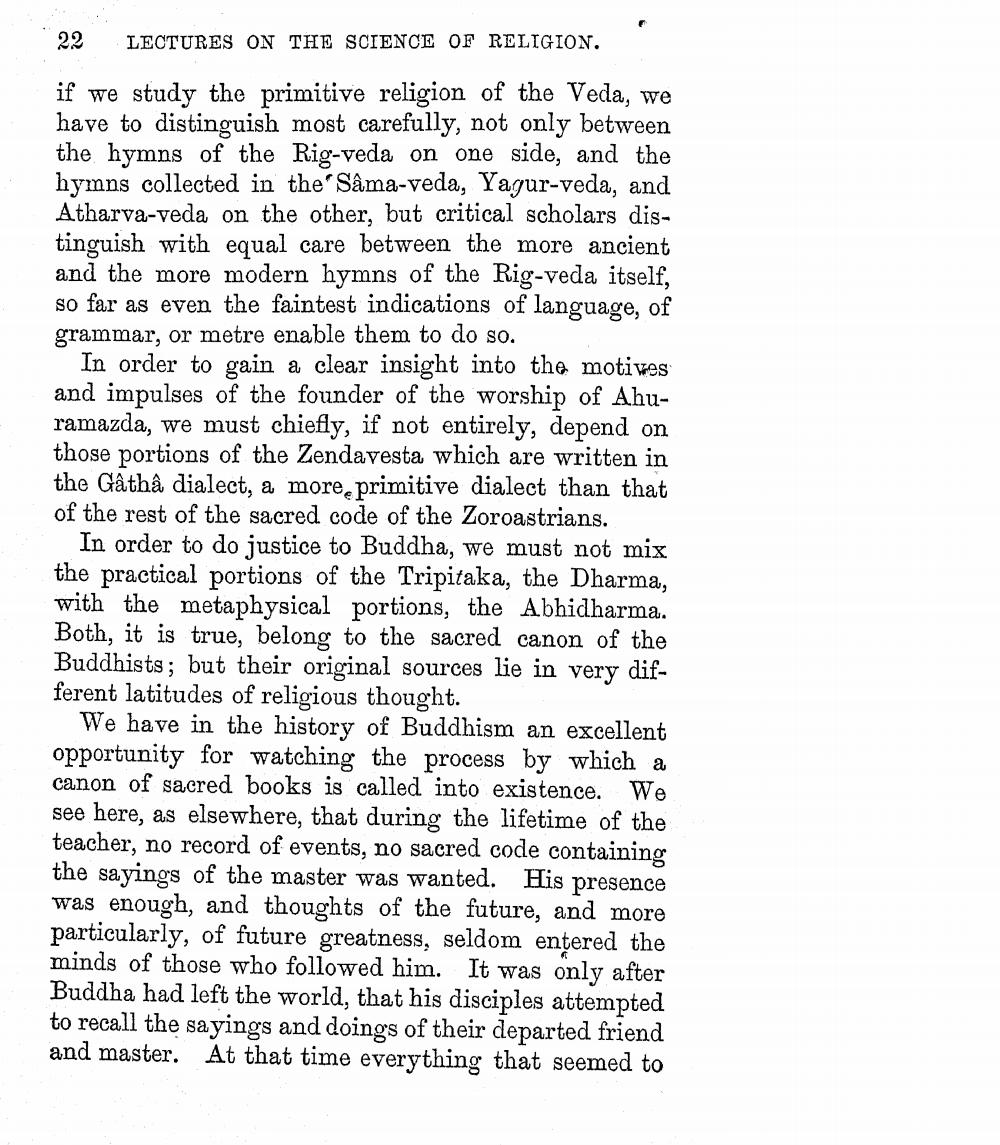________________
22
LECTURES ON THE SCIENCE OF RELIGION.
if we study the primitive religion of the Veda, we have to distinguish most carefully, not only between the hymns of the Rig-veda on one side, and the hymns collected in the Sâma-veda, Yagur-veda, and Atharva-veda on the other, but critical scholars distinguish with equal care between the more ancient and the more modern hymns of the Rig-veda itself, so far as even the faintest indications of language, of grammar, or metre enable them to do so.
In order to gain a clear insight into the motives and impulses of the founder of the worship of Ahuramazda, we must chiefly, if not entirely, depend on those portions of the Zendavesta which are written in the Gâthâ dialect, a more primitive dialect than that of the rest of the sacred code of the Zoroastrians.
In order to do justice to Buddha, we must not mix the practical portions of the Tripitaka, the Dharma, with the metaphysical portions, the Abhidharma. Both, it is true, belong to the sacred canon of the Buddhists; but their original sources lie in very different latitudes of religious thought.
We have in the history of Buddhism an excellent opportunity for watching the process by which a canon of sacred books is called into existence. We see here, as elsewhere, that during the lifetime of the teacher, no record of events, no sacred code containing the sayings of the master was wanted. His presence was enough, and thoughts of the future, and more particularly, of future greatness, seldom entered the minds of those who followed him. It was only after Buddha had left the world, that his disciples attempted to recall the sayings and doings of their departed friend and master. At that time everything that seemed to




